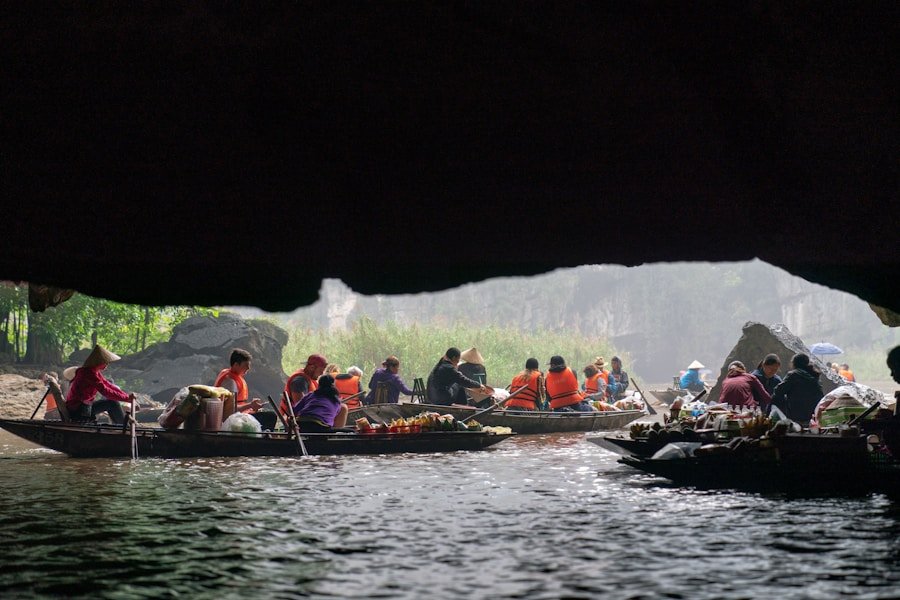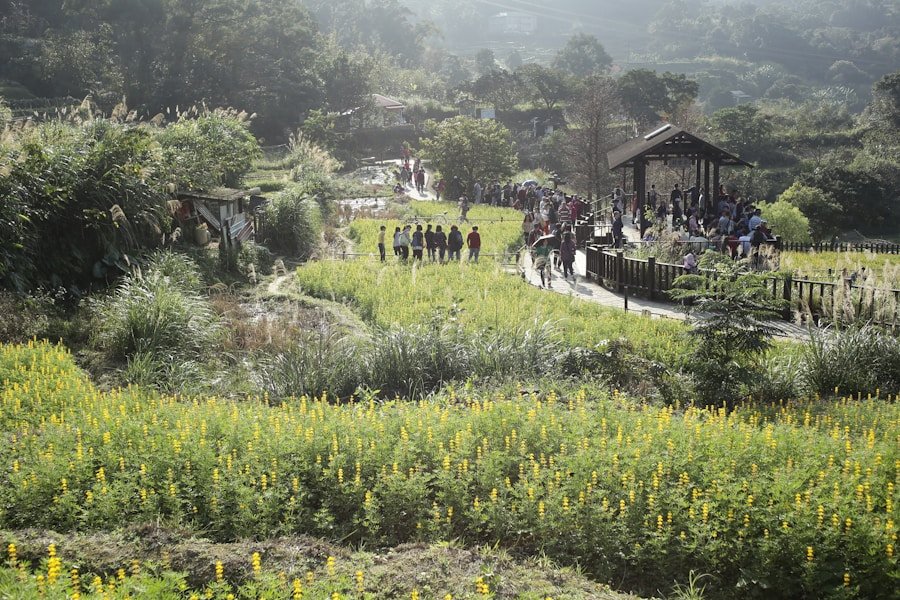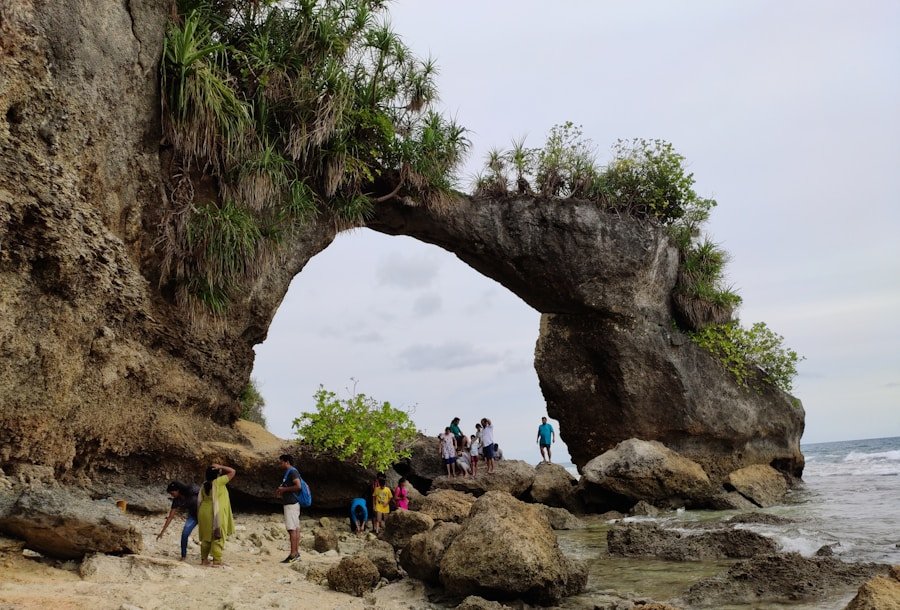This post may contain affiliate links. When you purchase through links on our site, we may earn an affiliate commission.
As I delve into the concept of regenerative tourism, I find it to be a transformative approach that goes beyond mere sustainability. Regenerative tourism seeks not only to minimize the negative impacts of travel but also to actively contribute to the restoration and enhancement of the environments and communities we visit. This paradigm shift in how we perceive tourism is essential in a world grappling with climate change, biodiversity loss, and social inequities.
It invites travelers to engage with destinations in a way that fosters resilience and vitality, ensuring that both the natural world and local cultures thrive. In my exploration of regenerative tourism, I have come to appreciate its holistic nature. It encompasses a wide range of practices, from supporting local economies to preserving cultural heritage and protecting ecosystems.
This approach encourages travelers to become stewards of the places they visit, promoting a sense of responsibility and connection. As I reflect on my own travel experiences, I realize how often I have been a passive observer rather than an active participant in the communities I have encountered. Regenerative tourism challenges me to rethink my role as a traveler and consider how I can contribute positively to the destinations I explore.
Key Takeaways
- Regenerative tourism focuses on restoring and revitalizing natural and cultural resources while empowering local communities.
- Empowering local communities through regenerative tourism is important for creating sustainable and inclusive development.
- Strategies for empowering local communities through regenerative tourism include capacity building, community engagement, and equitable benefit sharing.
- Successful case studies of regenerative tourism projects demonstrate the positive impact on local communities, environment, and economy.
- Empowering local communities through regenerative tourism brings benefits such as economic growth, cultural preservation, and environmental conservation.
The Importance of Empowering Local Communities
Community-Led Solutions
Empowerment fosters a sense of ownership and pride among locals, allowing them to share their culture, traditions, and knowledge with travelers in meaningful ways. By prioritizing local voices and perspectives, regenerative tourism helps to ensure that the benefits of tourism are equitably distributed.
Enhancing Quality of Life
When local communities are empowered, they become active participants in shaping their own destinies. This not only enhances their quality of life but also enriches the travel experience for visitors. I have witnessed firsthand how engaging with local artisans, farmers, and guides can lead to authentic interactions that deepen my understanding of a destination.
Strengthening Community Resilience
By supporting local initiatives and businesses, I contribute to a cycle of positive reinforcement that strengthens community resilience and fosters cultural exchange. This approach has the potential to create a lasting, positive impact on the local community and the environment.
Strategies for Empowering Local Communities Through Regenerative Tourism

To effectively empower local communities through regenerative tourism, several strategies can be employed. One approach that resonates with me is the promotion of community-led tourism initiatives. By involving locals in the planning and decision-making processes, we can ensure that their needs and aspirations are prioritized.
This might involve creating cooperatives or associations that allow community members to collaborate on tourism projects, thereby fostering a sense of unity and shared purpose. Another strategy I find compelling is the emphasis on education and capacity building. Providing training and resources for locals can equip them with the skills necessary to engage with tourists effectively.
This could include workshops on hospitality, sustainable practices, or cultural storytelling. By investing in human capital, we empower communities to take charge of their tourism offerings while preserving their unique identities. In my experience, when locals feel confident in their abilities, they are more likely to share their stories and traditions with pride.
Case Studies of Successful Regenerative Tourism Projects
| Project Name | Location | Regenerative Impact | Key Metrics |
|---|---|---|---|
| Finca Luna Nueva Lodge | Costa Rica | Restoration of degraded land, carbon sequestration, biodiversity conservation | 50% increase in bird species, 30% increase in tree cover, 20% reduction in carbon emissions |
| Chumbe Island Coral Park | Zanzibar, Tanzania | Coral reef conservation, sustainable tourism, community empowerment | 95% coral cover increase, 80% reduction in overfishing, 100% renewable energy use |
| Green School Bali | Bali, Indonesia | Education, sustainable architecture, permaculture | 90% waste diversion, 100% renewable energy use, 50% reduction in water consumption |
As I explore various case studies of successful regenerative tourism projects, I am inspired by the diverse ways communities have embraced this approach. One notable example is the community-based tourism initiatives in Costa Rica. Here, local communities have developed eco-lodges and guided tours that showcase their natural surroundings while providing economic opportunities for residents.
By prioritizing conservation and sustainable practices, these initiatives not only protect biodiversity but also create meaningful connections between travelers and locals. Another compelling case is found in the Maasai Mara region of Kenya, where community conservancies have emerged as a model for regenerative tourism. In this context, local Maasai communities have taken charge of wildlife conservation efforts while simultaneously benefiting from tourism revenue.
By establishing partnerships with tour operators and implementing sustainable practices, they have created a win-win situation that preserves their cultural heritage and supports their livelihoods. Witnessing such success stories reinforces my belief in the potential of regenerative tourism to create lasting positive change.
Benefits of Empowering Local Communities
The benefits of empowering local communities through regenerative tourism are manifold. For one, it leads to economic diversification and resilience. When communities are actively involved in tourism, they can create alternative income streams that reduce reliance on traditional industries.
This not only enhances their financial stability but also fosters innovation as locals develop unique offerings that reflect their culture and environment. Moreover, empowering communities cultivates social cohesion and pride. As I have observed in various destinations, when locals feel valued and respected, they are more likely to engage with visitors in meaningful ways.
This creates a richer travel experience for tourists while strengthening community bonds. Additionally, empowered communities are better equipped to advocate for their rights and interests, ensuring that their voices are heard in discussions about development and conservation.
Challenges and Solutions for Empowering Local Communities

Addressing Power Imbalances
One significant hurdle is the potential for unequal power dynamics between tourists and locals. In my travels, I have witnessed situations where external stakeholders dominate decision-making processes, sidelining local voices. To address this issue, it is crucial to establish frameworks that prioritize community involvement from the outset. This might involve creating advisory boards composed of local representatives who can guide tourism development efforts.
Striking a Balance between Economic Growth and Environmental Sustainability
Another challenge lies in balancing economic growth with environmental sustainability. As communities embrace tourism as a means of income generation, there is a risk of overexploitation of natural resources. To mitigate this risk, I believe it is essential to implement strict guidelines and best practices that promote responsible tourism.
Implementing Responsible Tourism Practices
This could include limiting visitor numbers in sensitive areas or encouraging low-impact activities that minimize ecological footprints. By adopting such measures, we can ensure that tourism benefits local communities while preserving the environment for future generations.
How to Get Involved in Regenerative Tourism
Getting involved in regenerative tourism is an enriching journey that allows me to contribute positively to the places I visit. One way I can engage is by seeking out community-based tourism experiences during my travels. By choosing accommodations and activities that prioritize local ownership and sustainability, I can directly support initiatives that empower communities.
Additionally, I can advocate for responsible travel practices among my peers. Sharing my experiences and knowledge about regenerative tourism can inspire others to consider the impact of their travel choices. Whether it’s promoting local artisans or encouraging sustainable transportation options, every small action contributes to a larger movement toward positive change.
The Future of Regenerative Tourism and Local Community Empowerment
As I reflect on the future of regenerative tourism and its potential for empowering local communities, I am filled with hope. The growing awareness of the need for responsible travel practices signals a shift in consumer behavior that prioritizes ethical considerations. As more travelers seek authentic experiences that connect them with local cultures, the demand for regenerative tourism will likely continue to rise.
In conclusion, I believe that by embracing regenerative tourism principles, we can create a more equitable and sustainable future for both travelers and host communities. Empowering local voices not only enriches our travel experiences but also fosters resilience in the face of global challenges. As I embark on my own journeys, I am committed to being an active participant in this movement—one that celebrates diversity, nurtures ecosystems, and uplifts communities around the world.
If you’re interested in learning more about how to create regenerative tourism experiences that benefit local communities, check out the article on A to Z Cozy Corner. This blog offers valuable insights and tips on sustainable travel practices that can positively impact the places you visit. By supporting local communities through responsible tourism, you can help preserve cultural heritage and protect the environment for future generations.
FAQs
What is regenerative tourism?
Regenerative tourism is a concept that focuses on creating travel experiences that not only minimize negative impacts on local communities and the environment, but also actively contribute to their regeneration and well-being.
How can regenerative tourism benefit local communities?
Regenerative tourism can benefit local communities by providing economic opportunities, preserving cultural heritage, and supporting environmental conservation efforts. It can also help empower local residents and create a sense of pride and ownership in their community.
What are some examples of regenerative tourism experiences?
Examples of regenerative tourism experiences include community-based tourism initiatives, sustainable agriculture and food tourism, eco-friendly accommodation options, and cultural exchange programs that directly involve and benefit local communities.
How can tourism professionals plan regenerative tourism experiences?
Tourism professionals can plan regenerative tourism experiences by engaging with local communities, understanding their needs and priorities, and co-creating experiences that are mutually beneficial. This may involve partnerships with local businesses, NGOs, and community leaders.
What are some best practices for implementing regenerative tourism initiatives?
Best practices for implementing regenerative tourism initiatives include prioritizing community engagement and participation, promoting cultural sensitivity and respect, minimizing environmental impact, and ensuring that economic benefits are fairly distributed within the community.

 using WordPress and
using WordPress and 
No responses yet